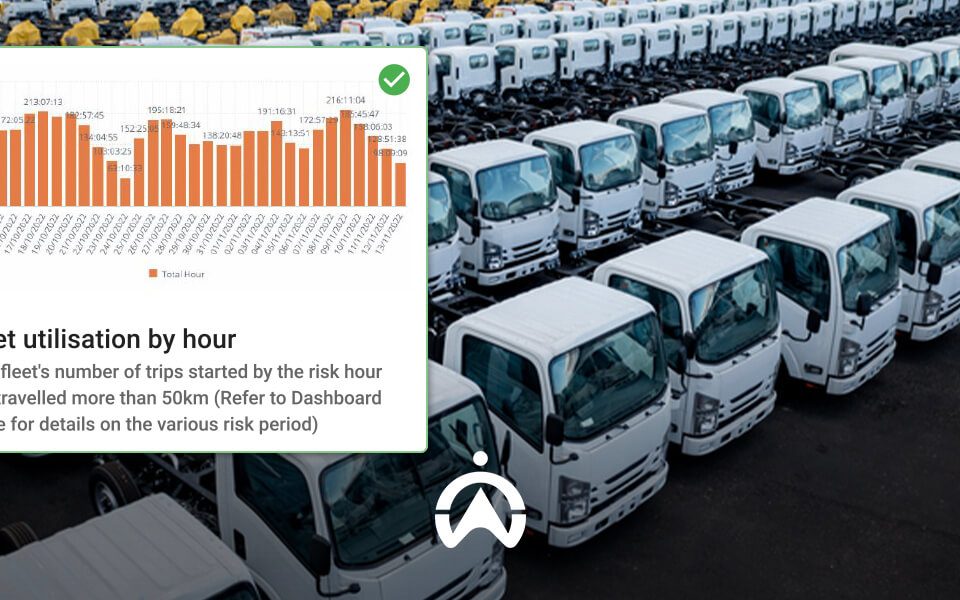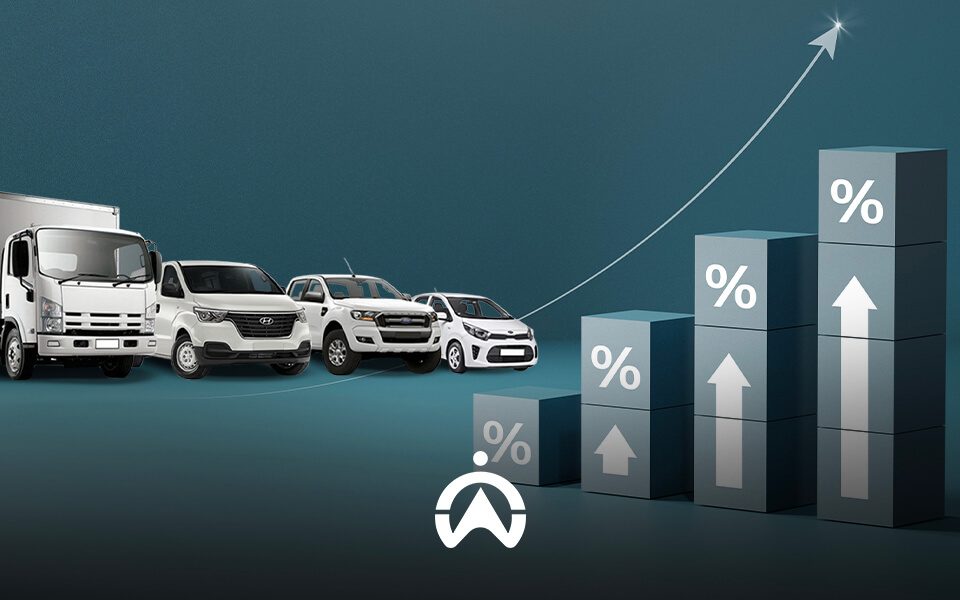How to Master Vendor Relationship Management & Secure Fleet Procurement Success
Defining vendor relationship management and how it is used
Vendor relationship management (VRM) is the practice of managing the partnership between your business and those that offer their goods or services, also known as vendors or suppliers.
Communication is the best weapon in your arsenal for vendor relationship management to work in your favour, especially when dealing with fleet procurement.
To foster strong and lasting connections, nothing works without communication and a clear understanding between you and your vendors. This builds and strengthens your relationship, resulting in a more successful and trusted partnership.
Fleet procurement basics for businesses
Fleet procurement refers to buying vehicles and related items that your fleet needs like tyres or replacement parts. The vehicles have to meet business standards while ensuring cost-effectiveness and compliance with regulations. To get to this, managers have to follow the fleet procurement process.
Fleet procurement is like shopping for your business on a larger scale. First, you scope out what vehicles you need and compare options like pricing, specs, and maintenance with other dealerships. After you’ve decided what type of vehicles you would like to purchase and how many, it’s negotiation time—you haggle with suppliers to get the best deal possible.
Once you’ve hammered out the details, it’s time to seal the deal by signing those contracts and transporting the newly-acquired wheels to your depot. But the communication doesn’t end there; you have to keep an eye on things to make sure everything runs smoothly, from delivery to ongoing maintenance.
And that’s the process: Find what you need, strike a deal, and uphold the relationship through catchups.
Guide to procuring vehicles for your fleet
To successfully follow the fleet procurement process, you have to involve stakeholders in sales, services, risk management, legal, and the business owner to ensure everyone is accounted for and is in agreement with the deal. This collaboration helps identify the fleet’s needs, assesses the condition of the existing fleet, and makes effective divisions in procurement to better their fleet.
When it comes to introducing new vehicles to your fleet, it’s important to remember the numbers. Consider all the financing options, like leasing, purchasing, and hiring needed vehicles. The total sum of the vehicle’s lifespan should also be taken into consideration (the maintenance, tyres, insurance, etc.), calculating the total amount of how much the procurement will cost the business.
How does vendor relationship management affect my fleet?
When it comes to fleet management, vendor management can positively impact fleet procurement in the following ways:
- Improved discussions:
This ensures a clear understanding of expectations and requirements from the company and the vendor. This can lead to better collaboration, fewer issues, and decreased misunderstandings.
- Risk management:
VRM involves assessing and mitigating risks associated with vendors, such as cybersecurity and vehicle safety, while transporting materials. By addressing these risks, your business will be better prepared for anything that occurs, including delays and disruptions.
- Cost savings:
With VRM, you can actively negotiate better contracts with vendors and suggest a price range that can work for your business, leading to a cost reduction. The longer you use these vendors and cultivate these relationships, your business can benefit from receiving discounts, loyalty points/programs, and other incentives that can reduce costs.
- Performance monitoring:
This is simply following up on the terms you’ve set on the contract. Are they following your delivery schedule? Are they offering high-quality materials? Have their prices fluctuated? This performance monitoring ensures the terms of your contract remain standing and that you’re getting what you paid for and agreed to.
- Regulatory compliance:
Inform your vendors of the regulations they have to follow when transporting materials. This can help both your business and the vendors/ suppliers to stay compliant and reduces the risk of legal or financial penalties.After successfully managing your vendor relationships for your fleet’s procurement, the pot of gold at the end of the rainbow is the extra benefits your business can enjoy on top of access to the services provided by the vendors.
– Reduce costs
– Builds resilience
– Achieve revenue
– Reach organisational goals

Fleet management, procurement, and vendor management—It’s all connected
- Fleet management: Taking care of a company’s vehicles, making sure they’re in good shape and used efficiently.
- Procurement: Buying goods and services for the business, including vehicles, parts, and maintenance services.
- Vendor management: Managing the relationships with the companies that supply goods and services to your business, including those related to your fleet.
Do you see the link?
You can use vendor relationship management tactics in your fleet between your drivers and employees and also in the procurement process by ensuring your business communicates the type of vehicle they need and understands the terms and conditions set by the dealership, their prices, payment plans, servicing packages etc.
The same practices of preserving relationships, like open communication, and ensuring you are on the same page with the vendors, are used in executing successful procurement.
How does vendor relationship management lead to fleet procurement success?
VRM is a key aspect of vendor management, it includes all the strategies and processes used to forge and sustain a mutually beneficial relationship, including onboarding, relationship management, and, of course, fleet procurement.
This delicate balance between business and vendor/supplier begins with these key aspects:
- Supplier selection:
Depending on your business and the industry you work in, you have to choose the right partners that will supply you with goods, materials, resources, etc. that are of high quality, fair priced and will benefit your business.
- Contracts:
After choosing the businesses you will partner with, create a contract that details all the details in clear wording. Make sure to mention all necessary information, including contract duration, material pricing, delivery schedules, what is expected from both sides, and what they need from you.
- Communication within collaborations: Just like in any other relationship, transparency, frequent communication and honesty are all needed to cultivate the relationship. Rather than relationships between people, those between businesses have higher stakes since one delivery delay or misunderstanding can affect your business, your profits and your business reputation.Regular meetings and feedback catch-up sessions, although sometimes tedious, can work in your favour.
Remember, you’re not just managing vendors, you’re building partnerships that can benefit your business for years to come. This can be especially important for fleet management companies that rely on consistent deliveries of parts, maintenance servicing, or fuel.
Successfully acquire vendors for your business
If this all seems appealing to you and your business could do with some suppliers here and there, then ready your pen and start taking some notes.
Finding reliable and high-quality vendors is crucial for any business, but it holds particular importance in fleet management. To find the perfect vendor for your business, you first have to do some research and take it from there.
- Do your research
Look up and source vendors or suppliers. Check online review platforms to get impressions from other businesses about potential vendors’ performance.
- Define your needs
Figure out exactly what your business needs in terms of quality goods, reasonable pricing and services that match your business’s standards. Your clearly defined needs set the tone for pricing.
- Initiate communication and start negotiating
After finding the business that stands out to you, reach out, informing them of your business needs and interest in their services and start talking about prices. With your needs already explained, choose the services and pricing that won’t hurt your budget.Inform them of any updates or changes whenever they occur in your arrangements. All that’s left is to uphold the newfound relationship, moving it from passive to collaborative.
- Build a trusting partnership through vendor relationship management This is where all the golden nuggets you’ve collected come in handy. Flex your vendor management knowledge by fostering a strong relationship that revolves around trust, collaboration and mutual goals, don’t just focus on the price.
The importance of having a good relationship with suppliers and vendors
Now that you have seen the value of nurturing vendor relationships and how vendor management can highly impact and affect your business relations and fleet operations, the only right decision for a business is to try and further cultivate this partnership.

Tips and tricks to build strong relationships with your suppliers
Maintaining strong connections with suppliers requires more than just creating a win-win scenario or leaving it up to transactions to do all the heavy lifting and keep the relationship going.
Here are a few tips that can be used to break the ice and enhance your relationship skills.
- Prioritising communication
Talk to your vendors regularly, not just when you need something. Update them on your business needs and ask for their input.
- Set and live up to expectations
Set clear expectations for delivery times, product quality and communication.
- Always pay on time Building trust between businesses has a lot to do with being reliable when it comes to payments. Make sure your payments are always on time.
- Be respectful of services
Treat your vendors as valued partners, not just suppliers. Show appreciation for their services and be open to feedback.
- Get Cartrack for improved vendor management
By partnering with vendors or suppliers who utilise Cartrack’s fleet management software, your business can benefit from streamlined communication, optimised delivery routes, and accurate fuel tracking, amongst other amazing features.With access to real-time data and insights provided by Cartrack, vendors can make informed decisions that lead to cost savings and improved efficiency. By ensuring that your vendors or suppliers use Cartrack’s solutions, you can minimise delays, enhance the visibility of their fleet, and ultimately strengthen your partnership relationships, resulting in greater satisfaction for your business and their other customers.
Improve vendor communication and relationship with Cartrack
Cartrack has more than all the bells and whistles you need to ensure your customers and partners stay happy and satisfied with your services.
But don’t take our word for it—here’s what Supermarket Farms had to say about how they use our services.




